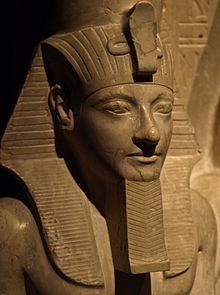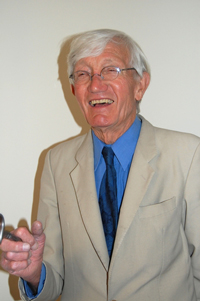Date: 7:30 – 9:00 pm, 13-Sep-2013
**Updated Location: Room 162, Earth Sciences Building, University of Calgary Campus**
Cost: Meetings are Free to members, Guests $5 – Students with ID $2
Description:
King Horemheb’s tomb was located in 1908 by Theodore M. Davis, an American investigator who made several spectacular discoveries in the Valley of the Kings. The tomb was cleared under the supervision of a young Englishman Edward Aryton. The results were published in Davis’ book The Tomb of Harmhabi and Toutankhamanou (1912). This volume was clearly incomplete. There is no mention of pottery, for example, and many objects found were not fully published or illustrated. Some problems were unresolved until recently, including the status of the well shaft located inside the tomb: there was no certainty that Davis had excavated it to the bottom. In a large undecorated room behind the sarcophagus chamber a huge mound of debris awaited investigation. It seemed to consist of material deposited there by the excavator. A tomb of such importance and magnitude (it is one of the largest in the Valley) clearly needed further work to ensure that all the evidence was available for a complete publication of the artifacts found in it. Horemheb’s magnificent sarcophagus also demanded attention: skeletal material remained inside, and the lid, replaced and replaced after the discovery in 1908, was wrongly orientated.
The Cambridge Expedition to the Valley of the Kings was granted permission by the Egyptian authorities in 2005 to carry out the project, and by 2009 the monument was completely free of debris. A complete catalog was made of the objects found by Davis (now in the Cairo Museum) and by the Expedition. During the recent work, important material came to light, including quantities of sherds from wine jars, part of the pharaoh’s funerary equipment. A number bear year dates 13 and 14 of the king, and these have proved vital in establishing the true length of his reign, hitherto a controversial matter. The new material eliminates twelve years form Horemheb’s reign, a finding that affects the chronology of the ancient Aegean and the Levant, and even further afield.
About the speaker:
Geoffrey Thorndike Martin is Edwards Professor of Egyptology Emeritus, University College London, and Fellow Commoner at Christ’s College, Cambridge, where he has responsibility for the College archives and plate. He was third Budge Research Fellow at the same College. He has directed excavations in Saqqara, the necropolis of ancient Memphis, where many interesting discoveries were made, including the tomb of the future pharaoh Horemheb. He has also worked in the Valley of the Kings, and has undertaken epigraphic work in the tomb of Akhenaten at Amarna and in many museums in Europe, the USA, and elsewhere. A number of publications have resulted from his research, and he has published a general account for the public of his excavations in Saqqara under the title The Hidden Tombs of Memphis (1991). His most recent monographs are a study of some of Egypt’s earliest inscriptions: stelae of courtiers, attendants, domestics, and others, whose graves in Abydos surrounded the tombs of Egypt’s first kings, ca. 3100 BC (Umm el-Qa’ab, VII) which appeared in 2011, and the Tomb of Maya and Meryt (2012), the funerary monument of one of the most prominent officials in the reign of Tutankhamun and a close colleague of Horemheb.
Location: Updated
Due to high demand for this lecture, the venue has been changed to the Earth Sciences Building, Room 162. For those of you who have been with the Calgary SSEA previously, it’s the old room we used to have across campus.


